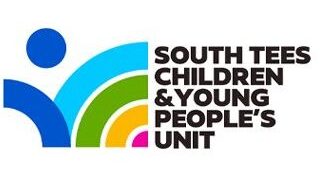

Children and Young People’s Audiology
My child has had their cochlear implant surgery. What happens now?

Soon after the cochlear implant surgery, you will receive the first three tuning or mapping appointments with the audiologist.
In the meantime, it is important the wound and scar are kept clean to avoid infection. You will be given instructions about this when your child is discharged from the hospital after surgery.
Important
Should you notice anything unusual with the wound such as redness, swelling, hot to the touch or discharge, please contact the cochlear implant office immediately for advice during office hours. Telephone: 01642 854068 or Email: [email protected]
It may be essential for your child to be checked by one of our ENT surgeons to prevent or treat any infections which could cause further problems or delay your child’s device switch-on. .
Out of office hours
- James Cook Hospital patients
Please contact the ward where you stayed (usually ward 35) through the hospital switchboard on Tel: 01642 850850 to ask advice. - Freeman RVI Hospital patients
Please attend local A&E, GP or walk in centre who will contact the Freeman hospital ENT registrar through the switchboard.
Switch-on appointment
This approximately 3 weeks after the operation. This is when the sound processor
(worn on the outside) is connected to the internal implant to introduce some stimulation.
Why do I have to wait three weeks?
This is to give your child enough time to recover from surgery and for the wound to heal properly. There is usually some swelling around the implant site which can take a few weeks to settle down. This is important as it could affect the wearing of the coil or headpiece. This would make it difficult for the sound processor to send the signals to the internal implant.
What happens in the ‘switch on’ appointment?
The audiologist will check the implant site. They will also check that the magnet strength for the headpiece or coil is just right. In some cases, a stronger magnet is needed initially, but may be reduced as the scar and swelling settles completely over time.
While the processor and headpiece are being worn, the external sound processor will then be connected to the computer via a cable or bluetooth connection which allows the audiologist to start tuning. A quick test of the electrodes will be performed first to ensure that these are all working fine. There are occasions, although rare, where electrodes may have to be switched off. If this occurs, the audiologist will explain this to you in more detail.
Once this is done, the audiologist will start the mapping or tuning. This is the process of measuring how much electricity is needed at each pitch to activate the hearing nerve.
Children will be taught to respond in different ways, depending on their age. For example, older children will either be asked to count the number and/or rate the loudness of the beeps. For babies, a different type of measurement will be used where they will not be expected to give any response at all. This is called objective measurement.
Once these levels are established, the audiologist will then switch the processor on to ‘live’ but at very low levels to begin with. Initially, what your child will hear may just be noises. It will take a while for the brain to adapt to the sound of the cochlear implant.
During the first session, even a small amount of stimulation usually sounds loud. The levels will gradually increase over time as your child gets used to the implant. As the levels increase, the sound quality usually improves. Further testing will be regularly performed by the audiologist to ensure that the levels are set appropriately.
How often does my child need to see the audiologist for tuning?
This varies for every child as it depends on how quickly the levels stabilise, but you should expect to have more frequent tunings within the first year especially if your child has bilateral cochlear implants.
The number and frequency of your child’s tuning appointments will depend on clinical need which will be decided by the audiologist.
The standard guideline we follow is as below:
| Switch on | Three weeks after your operation |
| 2nd tuning | One week after switch on appointment |
| 3rd tuning | Three weeks after switch on appointment |
| 3 month review | Three months after switch on appointment |
| 6 month review | Six months after switch on appointment |
| 12 month review | One year after switch on appointment |
| 24 month review | 2 years after switch on appointment |
| Annual review | Your child will have a review appointment booked annually. |
Some children may require more tuning appointments than others to ensure that the levels are always set to be as good as possible.
What is rehabilitation?
Rehabilitation is the process we use to enable your child to make the most of the new hearing they receive from their cochlear implant. Rehabilitation focuses on specific targets in a hierarchy of learning to listen skills.
First, we aim for your child to detect sounds, then to begin to discriminate sounds from each other. Then they will begin to recognise and identify sounds and be able to put a name to some of the sounds they hear. Their speech and language will begin to develop once they are able to do these things.
Your child’s awareness of sound and the ability to use it to understand speech and other sounds is developed at the child’s own pace. We aim to make our sessions enjoyable and relaxed.
How do we organise rehabilitation?
Your child’s keyworker, who may be a speech and language therapist or a teacher of the deaf, will arrange a virtual session with you at home or with your child’s school or nursery.
The session will last approximately one hour and we encourage parents and nursery or school staff to join us during the session.
This enables the people who spend the most time with your child during the week to participate in sessions and to develop ideas for more listening games and activities they can do before the next rehabilitation session.
How long does the keyworker visit?
Intensive rehabilitation like this will continue until your child has made significant progress in their listening. Children will be given regular rehabilitation visits.
We will discuss how and when these visits will take place with parents and local teachers of the deaf and speech and language therapists. The schedule of visits will be reviewed at intervals and continued as necessary up to a maximum of 40 visits over three years. After this, local services will continue to visit a child at school or home.
Why does my child need rehabilitation?
When a child has their cochlear implant stimulated for the first time, they are rather like a newborn baby who has just been introduced to the world of sound. Newborn babies spend a lot of time lying in their cot or pram and making sense of sounds around them. Your child is probably far more active than this and their attention is taken up with learning lots of other new skills.
Previously, your child gained information about the world around them through other senses, especially sight, but now they need to learn to listen. Being able to hear is not the same as listening to and making sense of sounds.
They need to have their attention deliberately drawn to the sounds around them, sounds such as the phone, the washing machine, the toilet flushing, as well as noises of toys and of voices. After some time, they will begin to recognise these and become more interested in speech. They may begin to babble and recognise their name being called and turn to look at you.
How do implant keyworkers work with other teachers and therapists?
We liaise regularly with local teachers of the deaf and speech and language therapists and, in some cases, make joint visits with them to see your child. Where children have been introduced to signing before they have an implant, we will also discuss with parents and local teachers of the deaf how to proceed. It is usual for families to continue to use their signing alongside the child’s growing awareness of sounds and speech.
What can I expect in the future?
Children are individual and their development in listening and speech and language will be individual too.
It is impossible to predict how well your child will be able to learn to do these things. We do know, however, that the best chance they have is if they wear their processor all day every day from as early on after the initial stimulation as possible. We also know that parents spend far more time with their child than we do; you are the most important person in helping your child learn to use their cochlear implant.
We will help and support you together with the others in our team, and those in the local services, and together we can help your child reach their potential.
What do I do if my child has any problems?
For any queries or concerns about your child’s cochlear implant, please contact us in the office and we will try our best to answer your questions.
Contact us
- Telephone: 01642 854068
Text only: 07903 594137
Monday to Friday, 8.30am to 4.30pm
Email: [email protected] - Ward 22 – Children & young adults
Telephone: 01642 854522
Email: [email protected]
Patient experience
South Tees Hospitals NHS Foundation Trust would like your feedback. If you wish to share your experience about your care and treatment or on behalf of a patient, please contact The Patient Experience Department who will advise you on how best to do this.
This service is based at The James Cook University Hospital but also covers the Friarage Hospital in Northallerton, our community hospitals and community health services.
To ensure we meet your communication needs please inform the Patient Experience Department of any special requirements, for example; braille or large print.
T: 01642 835964
E: [email protected]
The James Cook University Hospital, Marton Road, Middlesbrough, TS4 3BW.
Telephone: 01642 850850
